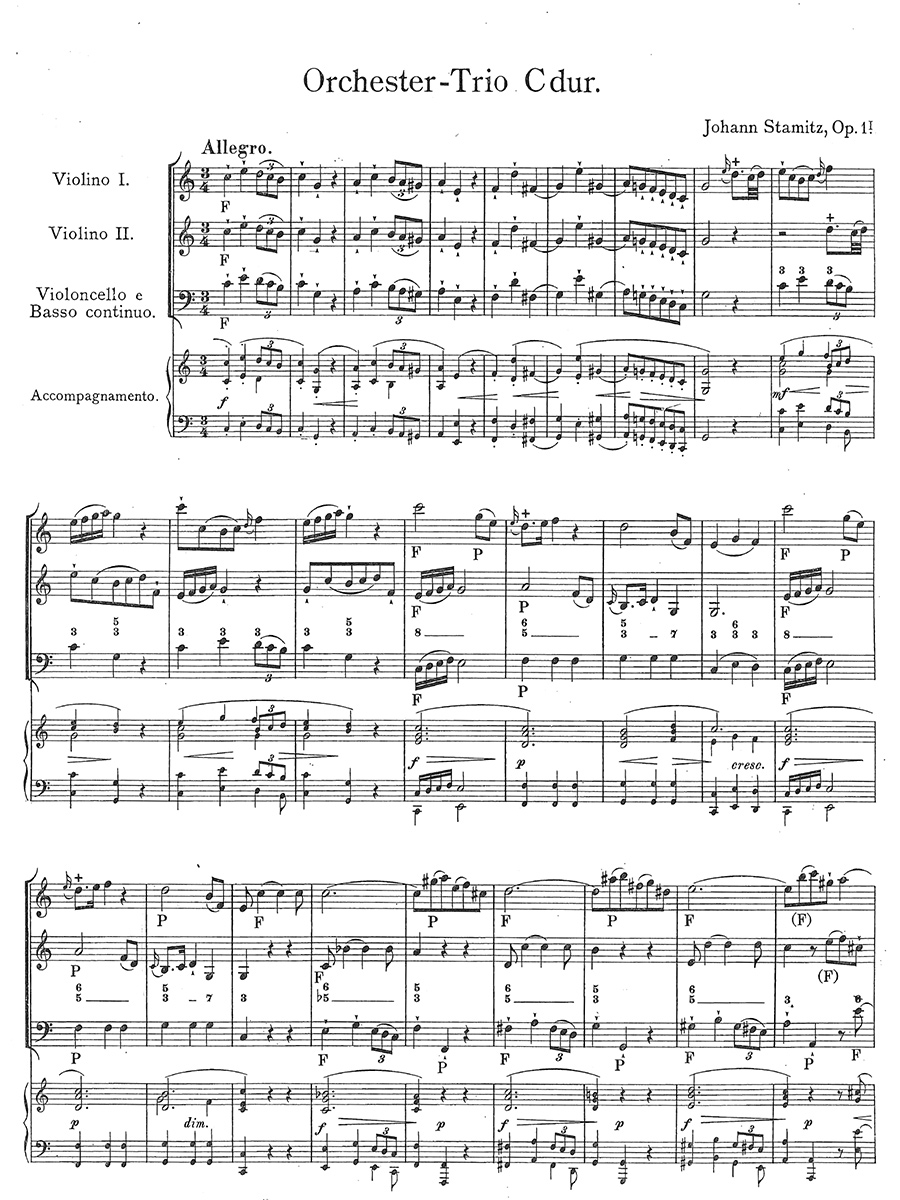Orchestral Works: Orchestral trio in C, Op. 1/1; Sinfonia in D, ‘La Melodia Germanica’, Op. 11/1; Sinfonia in G, ‘Die periodische Ouvertüre’ nr. 9, Op. 3/1; Sinfonia in D, op. 3/2; Sinfonia in B, Op. 8/5
Stamitz, Johann
26,00 €
Preface
Johann Stamitz
(born probably Deutschbrod / Bohemia, 17. June 1717 – buried Mannheim, March 1757)
Orchestral Works
op. 1/1—Orchestral trio in C, p.3
op. 11/1—Sinfonia in D, ‘La Melodia Germanica’, nr. 1, p.14
op. 3/1—Sinfonia in G, ‘Die periodische Ouvertüre’, nr. 9, p.36
op. 3/2—Sinfonia in D, p.56
op. 8/5—Sinfonia in B, p. 79
A Bohemian in Paris
Although Johann Stamitz was born in Bohemia, is considered the founder of the Mannheim School, and spent most of his professional life in Mannheim, much of our knowledge about Stamitz and his work connects him to Paris. We know that in the summer of 1754, Stamitz travelled to Paris, where he stayed for an entire year. Clearly, Stamitz and his music had been known to the Parisian public already, because performances of his music are documented at concert series Le Concert Spirituel in 1751. There are no reasons to assume that Stamitz had been present at the 1751 performance, even though the success of his music obviously provided him with an excellent reason to travel to Paris.
He appeared at the two concert series, Le Concert Spirituel (on 8 September 1754) and Le Concert Italien, performed his Mass in D on 4 August 1755, and lived at the home of Le Riche de La Pouplinière at Passy, where he also conducted the in-house orchestra. La Pouplinière was rich aristocratic banker, who had been the patron of Rameau and whose houseguests also included Rousseau and Voltaire. A few weeks after the Mass performance, Stamitz received a royal privilege to publish his op. 1, the six Orchestral Trios. The Trios were to remain the only composition published during his lifetime. It is assumed that Stamitz left Paris in the autumn of 1755 to return to Mannheim – where he died less than two years later, a few months short of his fortieth birthday.
Stamitz’ personal presence in Paris further boosted the popularity of his music. Judging by the fact that almost all of Stamitz’ published music was published in Paris in the decades following his death, his work was clearly in demand. Beside the numerous manuscript copies that circulated throughout Europe, the Paris prints of Stamitz’ music remain among the principal sources for Stamitz music to this day, because none of his autographs were preserved. (This was already acknowledged more than a century ago, when Hugo Riemann published the selection of symphonies reprinted in the present edition – volume IV of the Denkmäler der Tonkunst in Bayern, Leipzig, 1902 – with frequent footnote references to the Parisian editions of Stamitz’ works.)
Read full preface > HERE
Score Data
| Edition | Repertoire Explorer |
|---|---|
| Genre | Orchestra |
| Size | 210 x 297 mm |
| Printing | Reprint |
| Pages | 96 |
